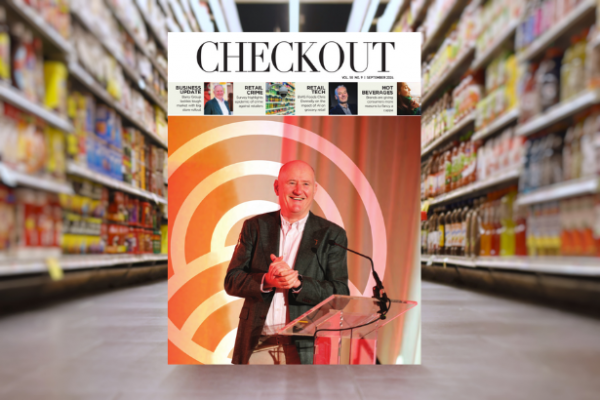Following on from Rabobank’s Marc Kennis’ appearance at the Checkout Conference, a new report from the bank indicates that consumers are anything but middle-of-the road these days. Gill Fitzsimons reports. This article first appeared in the July 2013 edition of Checkout.
Middle-ground retailers and food processors face a significant hit in years to come, according to a new report from Rabobank, as trends indicate consumers are trading down on core everyday items, while trading up on high quality purchases. Details of these so-called ‘hybrid’ consumer spending patterns are discussed in the Rise Of The Hybrid Consumer report, which follows on from the appearance by Marc Kennis, the bank’s Associate Director, Value Added Processing, at the Checkout Conference in February.
According to the report, consumers are less interested in mid-market products and are trading down on everyday food purchases, and purchasing more from discounters. At the same time, however, they are utilising money saved elsewhere to trade up on high end, premium products in ‘socially and emotionally relevant product categories’.
This ‘market dualisation’ means that the food sector will continue to become even more polarised in terms of the value/quality ratio while premium brands in supermarkets and fine dining will benefit.
The report reveals that this behaviour not only relates to trading up or down but also food choices at different times of the day. Consumers may consciously choose healthy functional food on one occasion and choose more indulgent, less healthy options on another. ‘It is not uncommon for the hybrid consumer to be a customer of both the high-end establishment category, serving healthy organic foods, and the quick service restaurant (QSR) category,’ it explains. Such polarisation leads the bank to conclude that the so-called ‘extreme’ ends of the market, ‘value’ and ‘premium’, are set to grow by high single-digit percentages to 2017, while the ‘mid-market is set to decline by 1 per cent to 2 per cent per annum.
‘The implications of this market trend are profound and touch on areas such as product offerings, distribution channels, marketing and brand management,’ the report notes. ‘We believe that hybrid consumption is a long lasting phenomenon. Therefore food processors, food retailers and food service companies alike will need to adapt or risk fading away.’
As products offered in the mid-market are increasingly perceived not to offer quality or value to the consumer, the segment is expected to decline; while it currently accounts for about 60%, Rabobank expects it to drop to 50% as the premium and value segments ‘gain ground’ over the coming years.
As well as this, the development rate of mid-market food products in the marketplace is expected to fall behind that of premium and value food categories within the next five years. Premium and high quality products are expected to grow by mid to high single digit percentages through 2017. The bank has noted three main trends driving this new consumer trend.
Socio-Demographic Developments
The growing influence of women within the household in a major factor when it comes to the household spend. Research has shown women are more objective than men when it comes to food purchases, for example, average women in the US control or have influence on more than 70% of the household spending, including cars, groceries, holidays and health care. The decline of the gender pay gap is also another ‘contributor to women’s improving purchasing power’ according to the report.
Younger generations who have grown up in the age of social media are more likely to base purchasing decisions on merit rather than specific brand loyalty. The bank believes those born in the 80s and 90s will shape how products are consumed in the next few years. Generations born between 1980 and the mid 90s are likely to trade down and save money on food purchases in order to spend more money on ‘socially relevant’ products. Rabobank reports that this generation of consumers ‘will take the hybrid consumption trend to the next level.’
Food Retailer Strategies
Rabobank believes that retailer strategies have facilitated this ‘hybrid behaviour’, as hard discounters, the expansion of the premium segment and internet shopping all encourage hybrid consumer patterns. The rising popularity of discounters Aldi and Lidl (currently at a combined 13.6% in the Irish market) continues to be a major factor in consumer spending and has given people an attractive option to trade down. In Germany, the report notes, hard discounters account for 43% of the market in the lowest income quartile and 34% in the highest.
The increasing use of the Internet by consumers as a tool to compare and contrast prices has encouraged greater receptiveness as to the value of particular items. In addition, the Internet offers more choice; again meaning hybrid behaviour is encouraged on another level.
Rabobank describes online grocery shopping as ‘another form of trading up for the hybrid consumer.’ However, the cost of adoption is a handicap to this growth (in the Netherlands for example, delivery costs are quite high; €12.95 for a shopping basket worth €70), meaning that costs need to fall before wider adoption of these services becomes commonplace.
Macro-Economic Developments
The global recession has accelerated market dualisation, the report notes. With limited disposable income and falling consumer confidence, people are now trading down on basic purchases. However people still want to indulge occasionally and are willing to pay a little extra for quality.
This hybrid behaviour is reflected in retailer growth patterns. Between 2007 and 2012, the high performers in the US were either hard discounters like Aldi, or premium retailers like HE Butt Grocery. Here, the growth of Aldi and Lidl has been well documented, while the news that Donnybrook Fair is about to open its fifth outlet is an indication that the premium end is also showing growth, albeit on a smaller scale.
A Different Strategy
In the report, Rabobank identified a range of strategies and tactics to help retailers and food service companies benefit from the rise of the ‘hybrid consumer’ trend.
Move up to the premium end: This can be easily achieved by offering healthy alternatives, using more natural ingredients and incorporating a strong corporate social policy and sustainable business practices. The French spirits company, Pernod Ricard is a company that has been successful in ‘premiumising’ its product line, it is now deriving 75% of sales from premium products Absolut and Chivas Regal.
Offer value products in the premium segment and premium products in the value segment: Retailers can cater for consumers who have become more cost conscious. UK retailer Waitrose offers bakery products under a premium, private label. With this, it encourages customers to continue shopping at a high-end chain but at a lower cost.
Use value products to sell premium goods: Supermarkets and food service outlets can attract customers in using this strategy. They can sell these value for money products while still aiming to sell premium more expensive products to the same customers. A well-known UK based coffee chain offers coffee to go at low prices to generate traffic and aim to sell more expensive goods like premium sandwiches.
Seize The Opportunity
Rabobank reports that by adapting these strategies, companies can ‘seize the hybrid opportunity, allowing nimble food processors, food retailers and food service companies to achieve a competitive edge and benefit from the rise of the hybrid consumer’
Speaking at the Checkout Conference earlier this year, Marc Kennis said the economy is a driving factor in the growth of such retailer behaviour: “Middle classes from developed markets are the most obvious candidates [to develop hybrid behaviour], because those from lower means of income don’t have the means to trade up and those from high incomes don’t have the incentive to trade down.”
Kennis also encouraged retailers to offer clearer differentiation between themselves and their competitors, saying many retailers are confusing consumers with their marketing messages. Retailers “need to distinguish themselves based on quality or on price,” he explained. “The marketing approach used to be based on demographics but the whole perception needs to change. […] People play different roles throughout their daily life. Retailers need to focus on the roles rather than the whole picture.”









